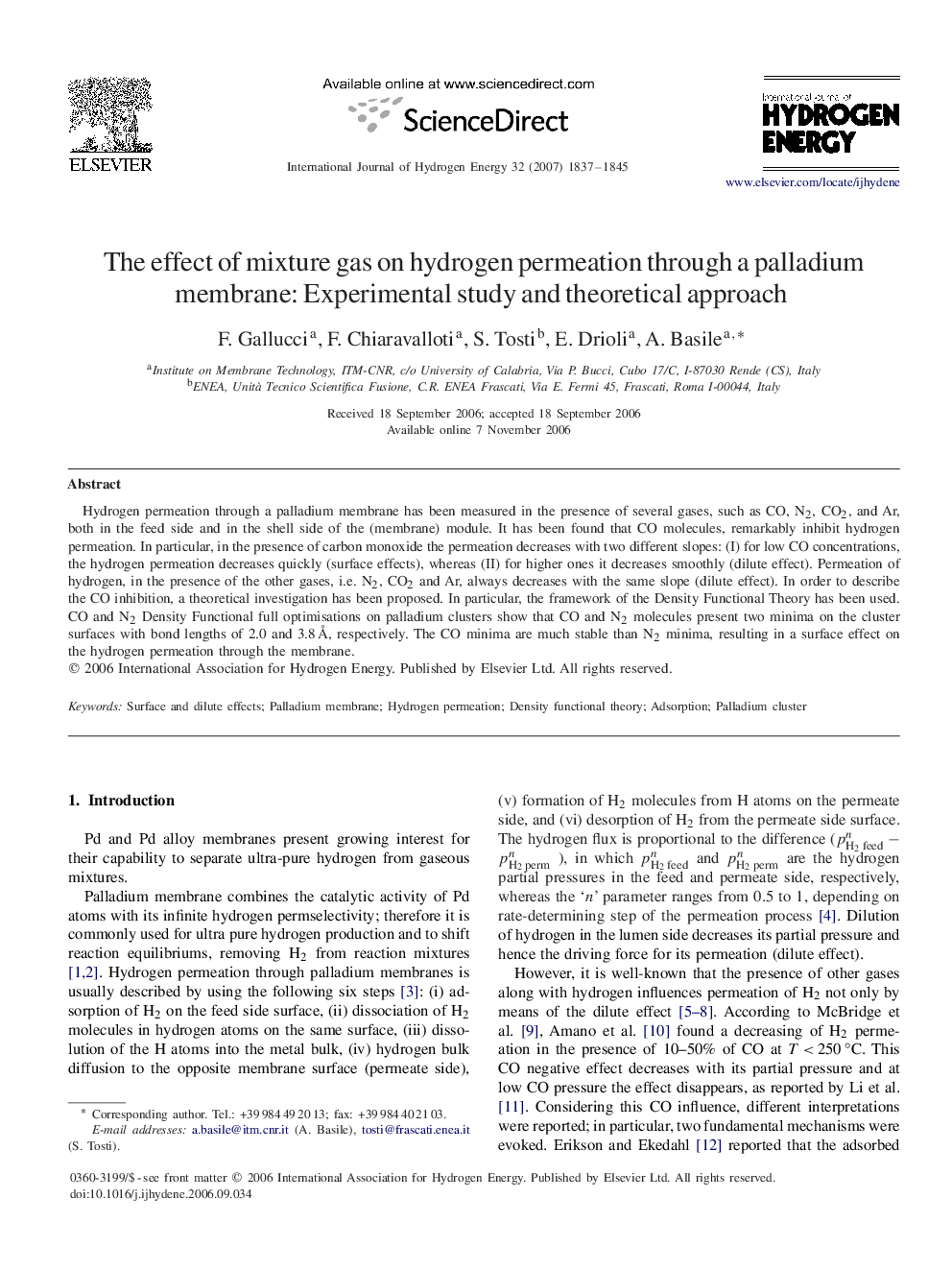| Article ID | Journal | Published Year | Pages | File Type |
|---|---|---|---|---|
| 1274981 | International Journal of Hydrogen Energy | 2007 | 9 Pages |
Hydrogen permeation through a palladium membrane has been measured in the presence of several gases, such as CO, N2N2, CO2CO2, and Ar, both in the feed side and in the shell side of the (membrane) module. It has been found that CO molecules, remarkably inhibit hydrogen permeation. In particular, in the presence of carbon monoxide the permeation decreases with two different slopes: (I) for low CO concentrations, the hydrogen permeation decreases quickly (surface effects), whereas (II) for higher ones it decreases smoothly (dilute effect). Permeation of hydrogen, in the presence of the other gases, i.e. N2N2, CO2CO2 and Ar, always decreases with the same slope (dilute effect). In order to describe the CO inhibition, a theoretical investigation has been proposed. In particular, the framework of the Density Functional Theory has been used. CO and N2N2 Density Functional full optimisations on palladium clusters show that CO and N2N2 molecules present two minima on the cluster surfaces with bond lengths of 2.0 and 3.8 Å, respectively. The CO minima are much stable than N2N2 minima, resulting in a surface effect on the hydrogen permeation through the membrane.
